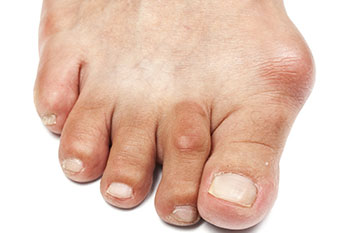
What is a Bunion?
A bunion, also known as Hallux Valgus, is a foot problem where a bony bump forms at the base of the big toe, on the inside of the foot. This occurs because the knuckle of the big toe is not aligned properly. This knuckle is the joint connecting the first bone of the big toe with the first metatarsal bone of the foot. When it's misaligned, the metatarsal bone sticks out while the big toe leans towards the second toe instead of pointing straight ahead.
Symptoms and Diagnosis of a Bunion
Apart from the obvious change in shape, wearing shoes might become painful, and it can be hard to find shoes that fit comfortably because of the bump. There might also be pain on the bottom of the foot. A foot doctor will examine your foot physically and ask about your health history. X-rays will also be needed to see how bad the bunion is and if there’s arthritis.
Treatments for Bunions
There are different ways to treat a bunion, depending on how bad it is. A foot doctor might recommend non-surgical treatments to ease symptoms, or they might suggest surgery to fix the problem.
Conservative: A foot doctor might suggest ways to make your symptoms better, like changing your shoes to ones with more space for your toes and that are more comfortable. They might also give you custom inserts for your shoes to cushion your foot or move your big toe into a better position. Sometimes they can adjust your current shoes to stop them from rubbing against the bunion. Toe spacers and special sleeves can also help ease the pain from the bunion.
Surgical: There are several types of surgery for bunions to fix the problem. Realignment surgeries, called osteotomies, move bones and ligaments back to where they should be. Bunionectomies, or exostectomies, take out part of the bone to get rid of the bump. Fusion surgeries stop the bones from moving to lessen pain. Implant surgeries replace the damaged joint with an artificial one.
If you’re experiencing pain that you think could be a bunion, it’s a good idea to schedule an appointment with a foot doctor. They can examine your foot and talk to you about what treatments might help.

